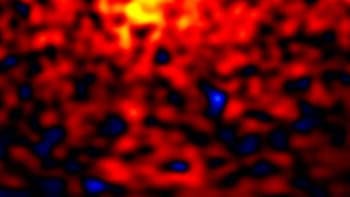John C Mather and George F Smoot have won the 2006 Nobel Prize in Physics “for their discovery of the blackbody form and anisotropy of the cosmic microwave background radiation”. The discovery has provided very strong evidence that the Universe was created in a massive explosion called the Big Bang.
The work was carried out in the 1990s using data from NASA’s Cosmic Background Explorer (COBE) satellite. John Mather coordinated the entire process of analysing the COBE data and also had primary responsibility for the experiment that revealed the black-body form of microwave radiation. George Smoot was responsible for measuring the small variations in the temperature of the radiation.
Cosmologists believe that cosmic microwave background radiation was created about 13 billion years ago — immediately after the Big Bang. At this time the Universe was a very hot body (3000 K) that emitted radiation with a distinct temperature signature – called the black-body spectrum. This radiation still exists today as cosmic microwave background radiation.
Mather determined that this radiation still bore the black-body signature, albeit at a much lower temperature (2.7 K) due to the ongoing expansion of the Universe. He also observed that the black-body radiation was very nearly the same throughout the Universe (isotropic). These two observations offer the first clear insights into the origin of the Universe and confirm the Big Bang hypothesis.
When Smoot analysed the COBE data he discovered tantalizing irregularities — or anisotropy — in the background radiation that have shed light on one of the most intriguing mysteries of cosmology: how and why did structures such as galaxies and stars form out of the homogeneous Big Bang? Irregularities present just after the Big Bang could have evolved over time into the galaxies of today.
John Mather was born in 1946 and received his PhD in physics from the University of California in Berkeley, CA, USA. He took a postdoctoral position at the Goddard Institute for Space Studies in New York for two years, during which time he led the proposal efforts for the Cosmic Background Explorer. In 1976 he assumed the position of study scientist, later to become project scientist, at the Goddard Space Flight Centre, where he performed his groundbreaking work on microwave radiation. Since 1995 has has also been senior project scientist for the infrared James Webb Space Telescope, an observatory intended as an improvement to the Hubble telescope.
Born in 1945, George Smoot is Mather’s elder by just a matter of months. After completing his PhD in physics in 1970 at the Massachusetts Institute of Technology in Cambridge, MA, USA, he went on to become a researcher at the University of California, where he began to look for evidence of the big bang. He has worked there ever since, and is currently making the final touches to a next-generation experiment called the Planck Surveyor, which will try to determine the high-energy physics of the early universe when it is launched in 2007.
The Nobel Prize in Physics is awarded annually by the Royal Swedish Academy of Sciences.



